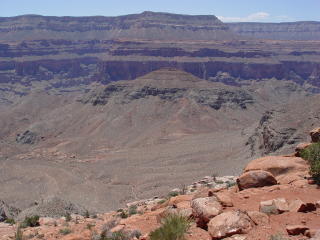
Cogswell Butte as it appears from the Esplanade. This butte
is mantled with small landslides and talus on the northern side but
spawned several megalandslides on its southern side. Surprise
Valley is located between the Esplanade and Cogswell Butte.
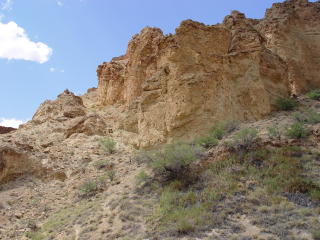
The Cogswell West Landslide is located on the southwestern margins
of Cogswell Butte and was probably one of the earliest slides to dam
Deer Creek. At that time Deer Creek was divereted west of its
present course. The slide breccia is cemeted by travertine and
appears to predate most other events in this corridor. Isolated
patches of slide debris mantle the Canyon wall on the opposite (south)
side of the Colorado River, suggesting this slide may have once dammed
the Colorado River.
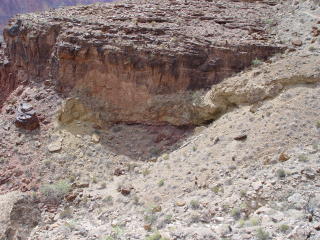
The oldest channel of Deer Creek is exposed along the river trail
about 500 m east of Deer Creek and approximately 100 m above the Colorado
River.
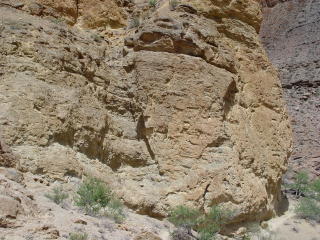
The West Cogswell Landslide contains an internal structures typical
of translational block glide landslides, including numerous grabens,
like the one shown here.
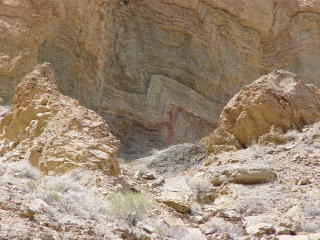
The Base of the Bright Angel Shale within the West Cogswell Slide
mass exhibits a series of kink bands or chevron folds, as seen here.
These are suggestive of basal compression and overriding of the upper
slide mass, suggestive of slow movement.
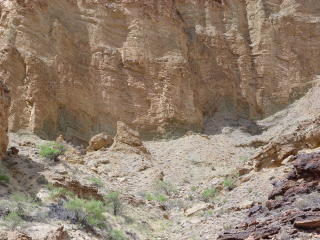
A wide angle view of the chevron folds exposed along the base
of the West Cogswell Slide. These structures are in variance
with the cemented breccia zones we usually observe along the base
of megalandslides in the this part of the Grand Canyon.
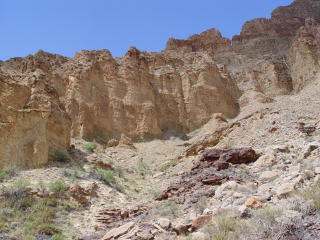
The chevron folds carry upwards of 150 feet through the remnants of
the West Cogswell Slide, which is highly dissected and denuded.
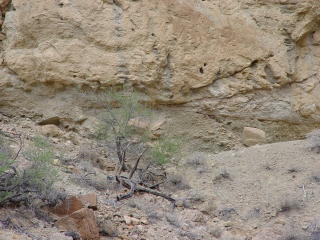
The basal rupture surface of the West Cogswell slide is exposed along
the upper river trail between Deer and Tapeats Creek, seen here.
Scrub vegetation in this area appears to be fed by intermittent springs
issuing from the toe of the old slide.
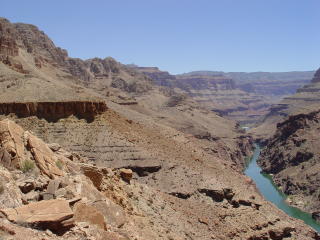
The Cogswell East Landslide as viewed from the Deer Creek Landslide
to the west. This slide consists of two large backrotated blocks,
with the lowest one damming the Colorado River. This event diverted
the river to a near course where it began downcutting through Precambrian
granites, creating what is known as the Granite Gorge of the Colorado
River. The unofficial narrowest point of the Colorado River
in the Grand Canyon is located here when the water is low.
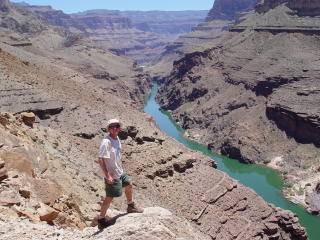
Conor overlooks the Granite Narrows from the Deer Creek Slide.
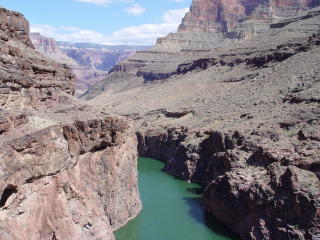
A closer view of the Granite Narrows shows the incised channel of
the Colorado River, which reaches a depth of 85 feet with a width
as little as 76 feet. The water turns brown with sediment in
the late summer and fall during the rainy season.
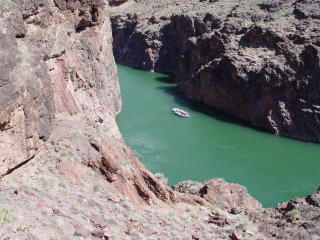
Rafters floating through the Granite Narrows.
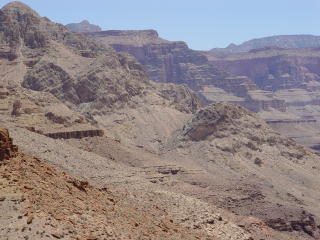
The two massive backrotated blocks of the Cogswell East Landslide
are classic examples of Toreva blocks. This view is looking
east from the Deer Creek Landslide.
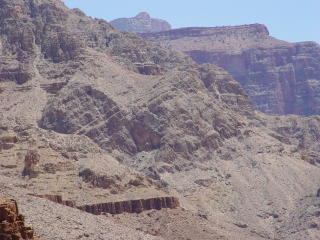
Close-up view of the upper slide block of the East Cogswell Landslide.

Ancient channel of the Colorado River filled by the East Cogswell
Slide at Mile 135, as it appears from river level, just upstream.
The slide debris fell on top of channel gravels and a series of clastic
dikes punctuate the slide debris, indicative of hydraulic fracturing.
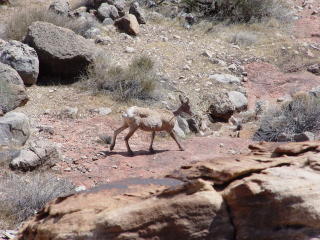
Desert big horn sheep are commonly seen along the river trail in the
vicinity of the Mile 135 buried channel.
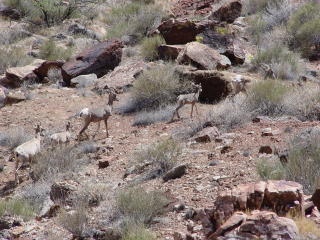
Another view of the big horn sheep, including some youngsters, walking
in single file along the lower river trail.
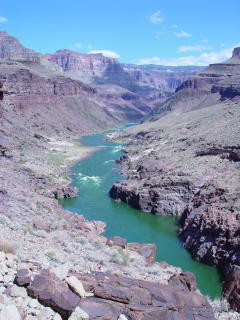
The official narrowest point on the Colorado River is located just
upstream of the Granite Narrows and is only 76 feet across.
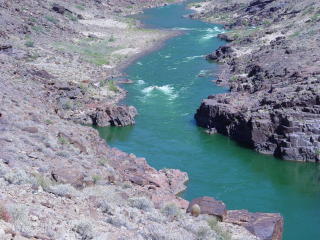
A closer view ot the narrowest point along the Colorado. Notice
the sediments deposited behind this constriction during high water.
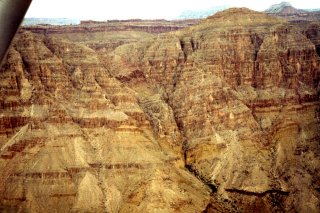
In 1978
Dave Rogers and Marvin Pyles, grad students at U.C. Berkeley, began
studying massive landslides in the Grand Canyon region. They
hired a private aircraft to take stereopair images of landslide features
throughout the canyon, sometimes from as low as a few hundred feet!
They noticed two slumps enamating from the southern side of Cogswell
Saddle, shown above. These are not visible when traversing the
River Trail between Deer and Tapeats Creek but might be viewable from
the south side of the Colorado River.
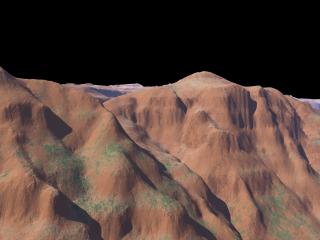
A similar
view of the Cogswell Butte created using Terragen, a photorealistic
scene generator that uses digital elevation models (DEMs) to render
scenes. Note the similarities between the prototype scene and
the artificial rendering. This image was generated using a 10
meter DEM. Although the resolution is only 10 m, renderings
can be useful forensic tools to ascertain where old photographs were
imaged. Images depicting the Martian landscape using Terragen
appeared on the cover of the January 2004 National Geographic Magazine.
Questions or comments
on this page?
E-mail Dr. J David Rogers at rogersda@umr.edu
or
Conor Watkins at cwatkin@umr.edu.
